5 Reasons to Take Part in Wrocław Off Gallery Weekend
Wrocław Off Gallery Weekend is a unique event that is organized in Wrocław, Poland on the October 18–20, 2024. It networks and unites various...
Guest Profile 16 October 2024
My first encounter with Maki Na Kamura‘s art left me perplexed with what exactly the German-based, Japanese artist was intending to show her viewers in her paintings. Although I was confused by the subject matter of her paintings, her cosmopolitan color palette and spontaneity of her compositions immediately grasped my attention.
Maki Na Kamura’s vibrant works of art are ultimately considered to be abstract, figurative landscapes. Although they are innovative and “a breath of fresh air” in comparison to other landscapes in the history of art, I believe her landscapes are derived from those of Japanese artist Katsushika Hokusai and from the classical masters of the Western tradition, such as Giorgione and Jean-François Millet. Maki Na Kamura shows us how the artistic heritage of her current home in the West and her ethnic heritage in the East can come together to create landscape compositions that diverge from the styles created in the past.

Layers upon layers of paint immediately capture the eyes’ attention when observing Na Kamura’s eclectic landscapes. The multiple layers of paint that are divided into multiple lines is a testament to Na Kamura’s lack of a belief in the straight horizon line that has always been used by artists in the Western tradition. Her absence of a primary element in Western painting also shows that no boundaries exist between sky and land.
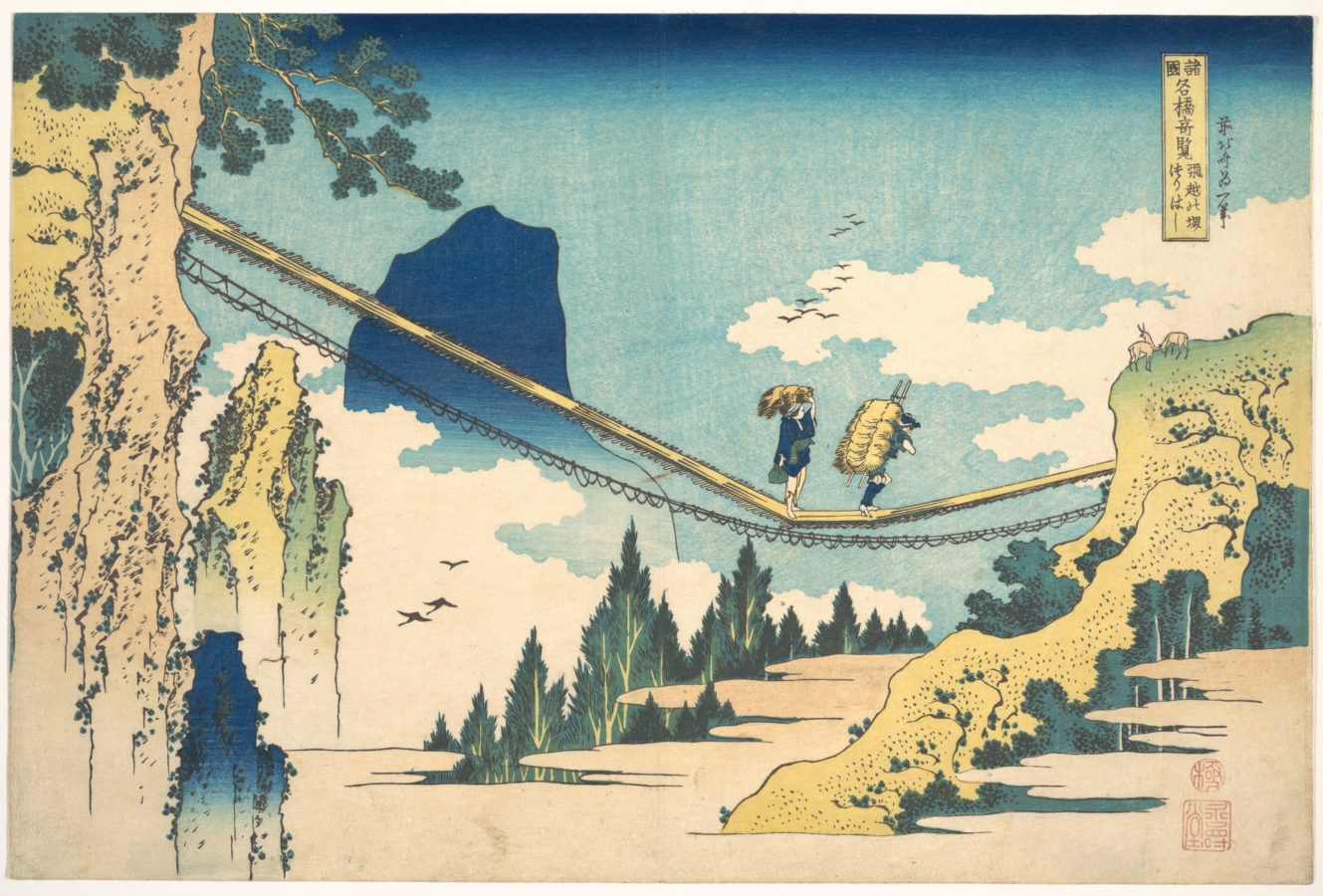
However, in the Oriental tradition, a horizon line tends to be absent in landscape paintings. Thus, it is evident that the lack of a traditional horizon line in Na Kamura’s paintings seems to have been inspired by the 19th century Japanese painter-illustrator, Hokusai. His most notable work, Great Wave off Kanagawa, is a prime example of Hokusai’s works that do not use a horizon line that is interrupted by clouds.
While many Western landscapes use straight, parallel horizon lines to give paintings their static nature, Na Kamura creates a sense of dynamism by dividing the horizon line into pieces. It gives the artist’s landscapes their fragmentary nature. However, figurative elements such as people and buildings are also found in her paintings. The combination of both abstract and figurative elements within Na Kamura’s compositions creates interesting contrast within the paintings.
Recently, Maki Na Kamura revealed in an interview that her use of Japanese landscape painting techniques did not come from close examinations and studies of these paintings but through her memories of seeing these paintings in a museum. The unconventional nature of this series of landscapes is further attributed by the use of a German word: Landschaftsdarstellung, dubbed “LD.” It means: ‘landscape representation’ and might be a statement that Na Kamura’s landscapes escape from the reality of nature.
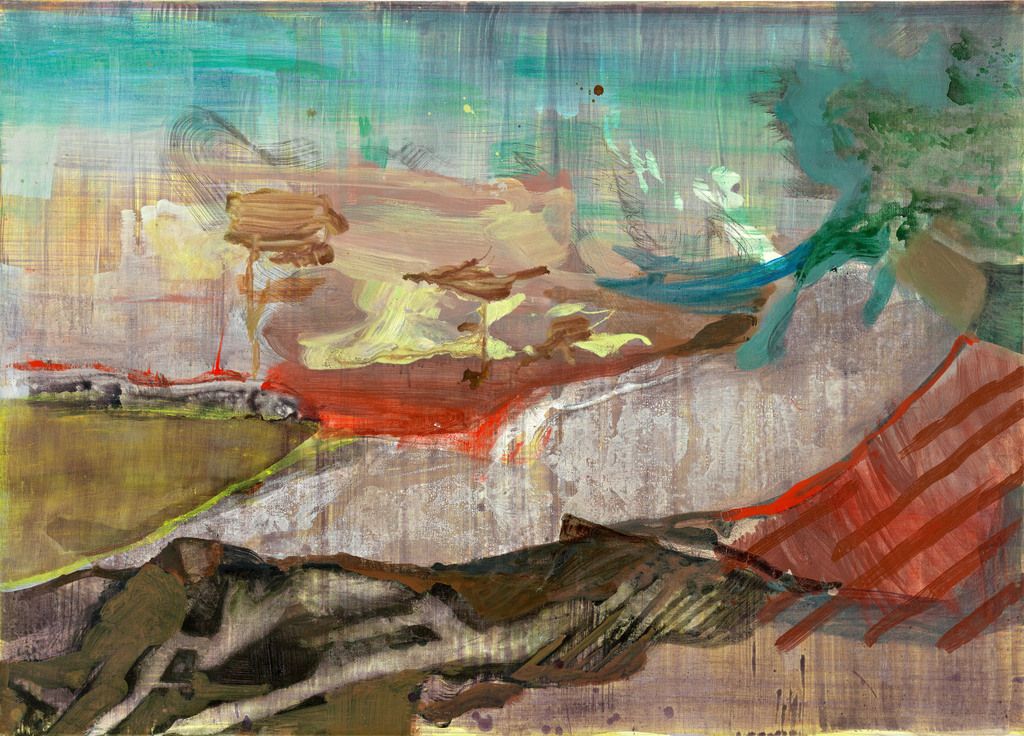
In LD XXV, Maki Na Kamura recalls the work of the Italian artist, Giorgione, and, more specifically, his composition, Sleeping Venus. She has transformed Venus’s body into a white and beige void. The other figurative elements present in Giorgione’s composition are reduced to abstraction: the red cushion upon which Venus rests is reduced to red stripes, the trees in the background are quick brush strokes, and the blue of the mountains dissipates into the air and rock. She has completely transformed Giorgione’s Venus into a compilation of various colors and abstract shapes.
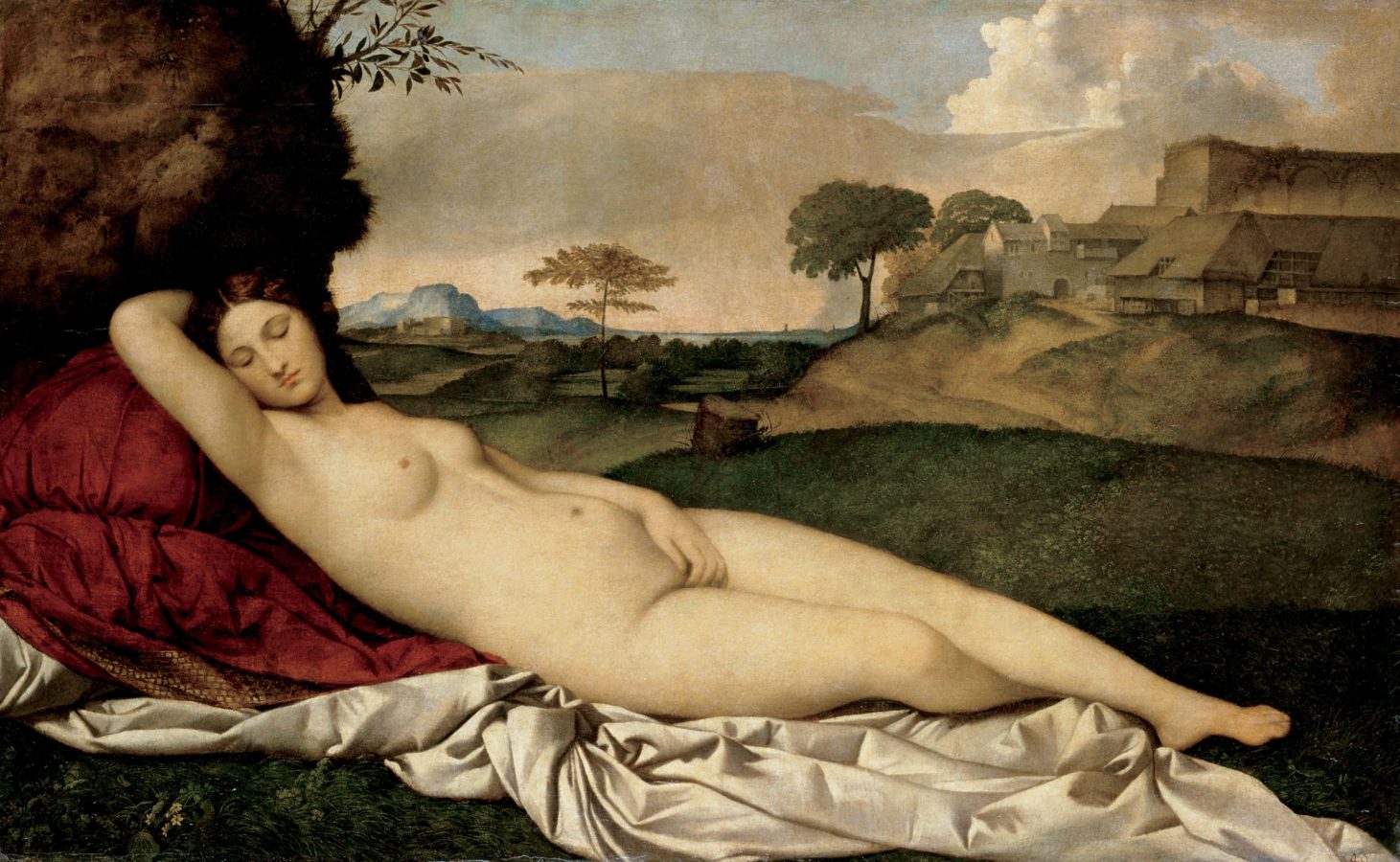
Another reference to a classical master can be seen in LD XXIII. Na Kamura has extracted the three women from Jean-François Millet’s The Gleaners and drops them into an abstract landscape. The painting comes from a series Steine legen, Äpfel lessen, which means ‘to put stones, to read apples’ and is a reference to a 17th century masterpiece by Guido Reni. Maki Na Kamura’s compositions contain references to classical mythology.
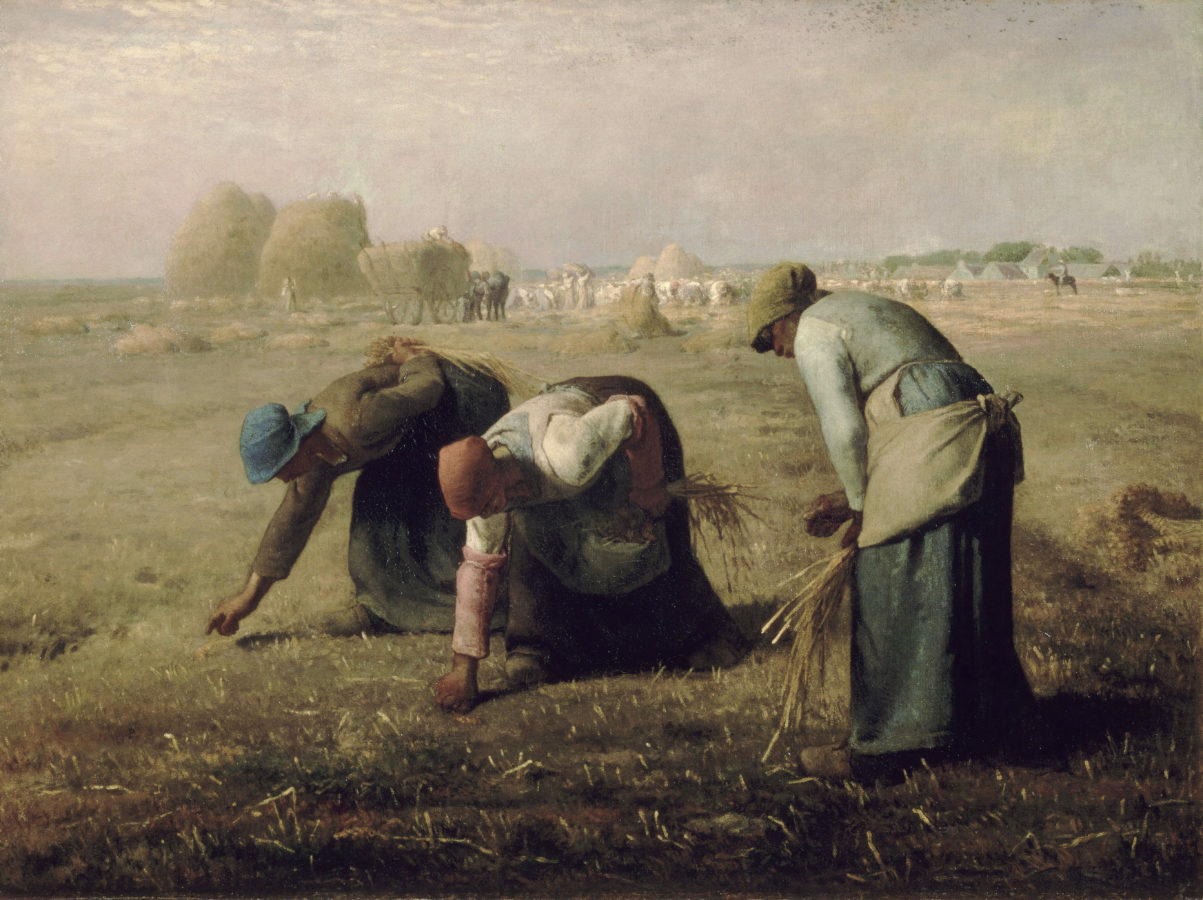
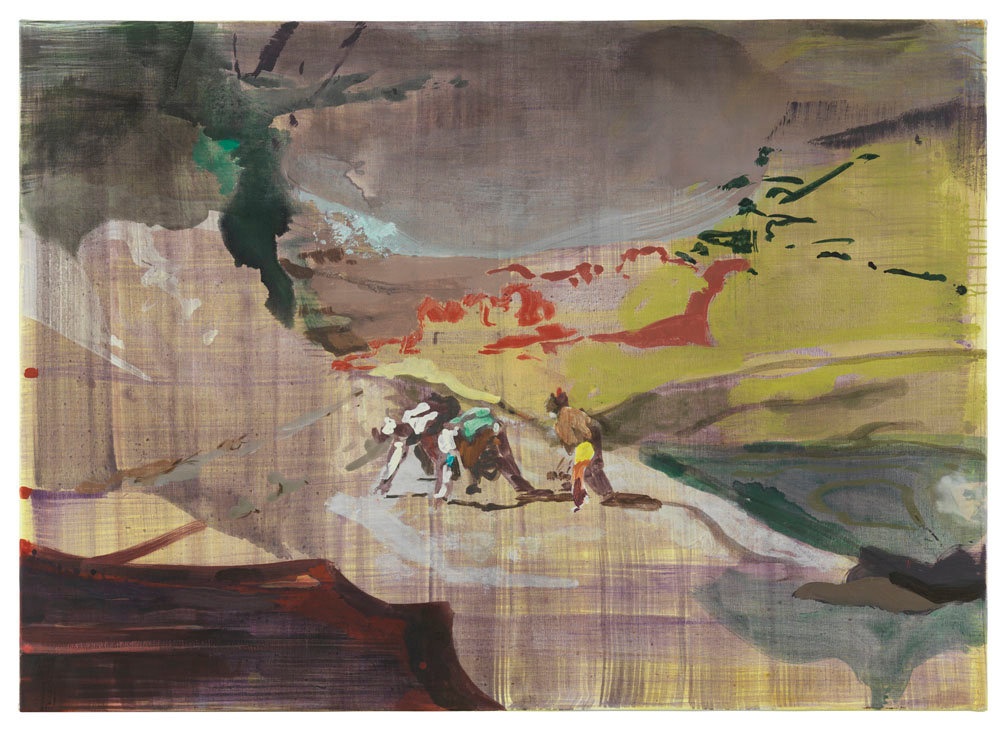
Although Na Kamura’s paintings are considered to be landscapes, they digress from the traditional landscape painting that clearly delineates all the features of the land. Instead of following academic art tradition, Maki Na Kamura trades clarity for abstraction and reality for imagination by using a vibrant color palette, loose brushstrokes, and abstract shapes.
Tradition clearly does not seem to be followed in Maki Na Kamura’s landscapes but introspection into the artist’s ethnic background, personal experiences, and comparison of other paintings indicates that she does follow artistic traditions of both the East and the West. The abstract and figurative quality of Na Kamura’s paintings not only is an exemplification of a divergence from the typical style of the landscape painting but also a compilation of how the people of the West and the East see landscapes through the use of a brush.
DailyArt Magazine needs your support. Every contribution, however big or small, is very valuable for our future. Thanks to it, we will be able to sustain and grow the Magazine. Thank you for your help!